

Passover and Baptism
Written by Alicia McHarness
Question: Do you renounce Satan and all the spiritual forces of wickedness that rebel against God?
Answer: I renounce them.
Question: Do you renounce the evil powers of this world which corrupt and destroy the creatures of God?
Answer: I renounce them.
Question: Do you renounce all sinful desires that draw you from the love of God?
Answer: I renounce them.
Question: Do you turn to Jesus Christ and accept him as your Savior?
Answer: I do.
Question: Do you put your whole trust in his grace and love?
Answer: I do.
Question: Do you promise to follow and obey him as your Lord?
Answer: I do.
These words were the first time I, as a former Evangelical (your typical mainstream American Christian), experienced a baptism ceremony that was in every sense a covenant making ceremony. As a child I had been baptized in an outdoor pool set up in a Reno, NV park for a special “baptism service” of my evangelical church. A few weeks earlier my parents had told me with obvious excitement that there was going to be a baptism class for the kids who were wanting to get baptized at this special service and they asked if I wanted to participate. Prior to this moment baptism had not been a consideration I had; I’d observed people getting baptized, but it had no real significance to me. But I did believe in Jesus and didn’t want to tell my parents no, so I attended the class. I remember very little of the class and at my baptism I was asked to speak into a microphone and share why I wanted to get baptized. Anyone who has witnessed an Evangelical baptism of a child will know this simple question and answer format is fairly common and the child will always answer some version of “because I love Jesus and want to follow him”. It is worth noting that Evangelical Christianity does not consider sacraments like baptism to be necessary for salvation, it is a formality that is more of a rite of passage into the Christian life and community. In the years that followed I never felt different or closer to my Heavenly Father as a result of being baptized; rather, my childhood was marked by a great deal of anxiety about whether I was in fact saved or not. It wasn’t until I began attending the Episcopal Church as an adult that I was introduced to the idea that there was more to baptism than just letting everyone know you loved Jesus.
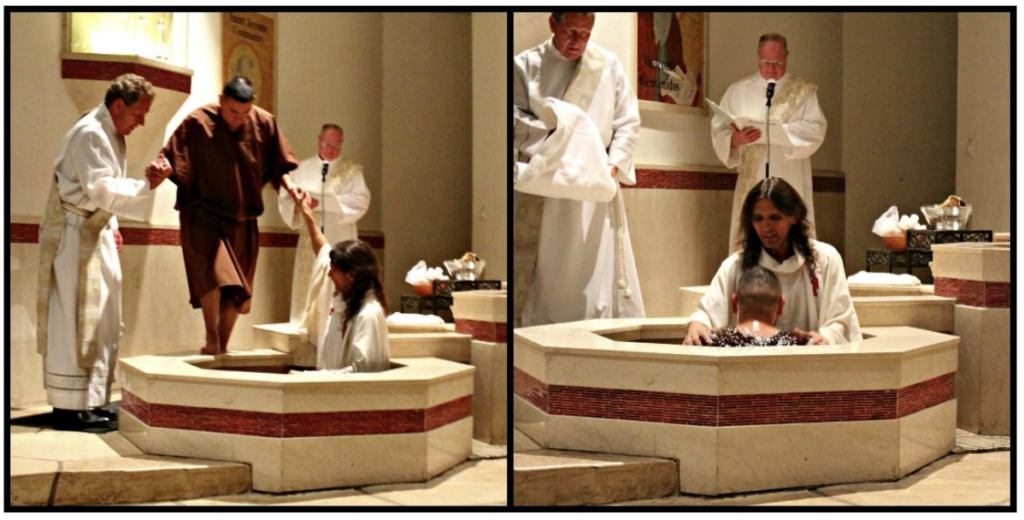
The Episcopal Church of America is a branch of the Church of England, which is itself an offshoot of the Catholic Church. It is “Protestant in doctrine and Catholic in practice” meaning that the church services differ only in small ways from the manner in which the services of the Catholic Church have developed and been practiced over the last 2000 years. There is much more ritual and reverence practiced in the services, and baptism is a special rite with very specific language and traditions. The first time I witnessed one it struck me as having more in common with a wedding service with its declarations of faithfulness and promises made. Isn’t that what baptism is after all? The moment we “wed” ourselves to Christ and take on his name, renouncing all other things that would separate us from him. There is incredible similarity with what Brigham Young said of baptism; “All Latter-day Saints enter the new and everlasting covenant when they enter this Church (through baptism). They covenant to cease sustaining, upholding and cherishing the kingdom of the Devil and the kingdoms of this world. They enter the new and everlasting covenant to sustain the Kingdom of God and no other kingdom. They take a vow of the most solemn kind, before the heavens and earth, … that they will sustain truth and righteousness instead of wickedness and falsehood, and build up the Kingdom of God, instead of the kingdoms of this world” [a].
Immersion for Conversion
Christian baptism is the act of a convert who is taking action to demonstrate their desire to enter into covenant relationship with God; traditionally it is considered to be essential for salvation and is a widely recognized feature of Christian faith and practice. Yet the act of baptism as an element of covenant making predates the Christian era and is deeply rooted within Jewish practice. Immersion in “living water” was the final act of a Gentile who was choosing to convert to the God of Israel and be “reborn” as an Israelite. In fact, the concept of being “born again” was coined by the Talmudists to “describe the legal transformation a Gentile (non-Jew) must undergo in order to complete a conversion to Judaism” [c]. It symbolized reentering the womb and being reborn as a literal child of Abraham and member of the covenant. This is why Nicodemus in John 3 was confused when Christ stated he must be “born again” as he was already Jewish. The view that being a descendant of Abraham was enough to secure the promises of the covenant appears to have been the general opinion held by Jews of Christ’s day. This is why Jesus told Nicodemus “‘That which is born of the flesh is flesh, and that which is born of the Spirit is spirit’ (John 3:6). Jewishness can be inherited physically. A Jewish woman gives birth to a Jewish child. Right standing with God, however, cannot be inherited” [c].
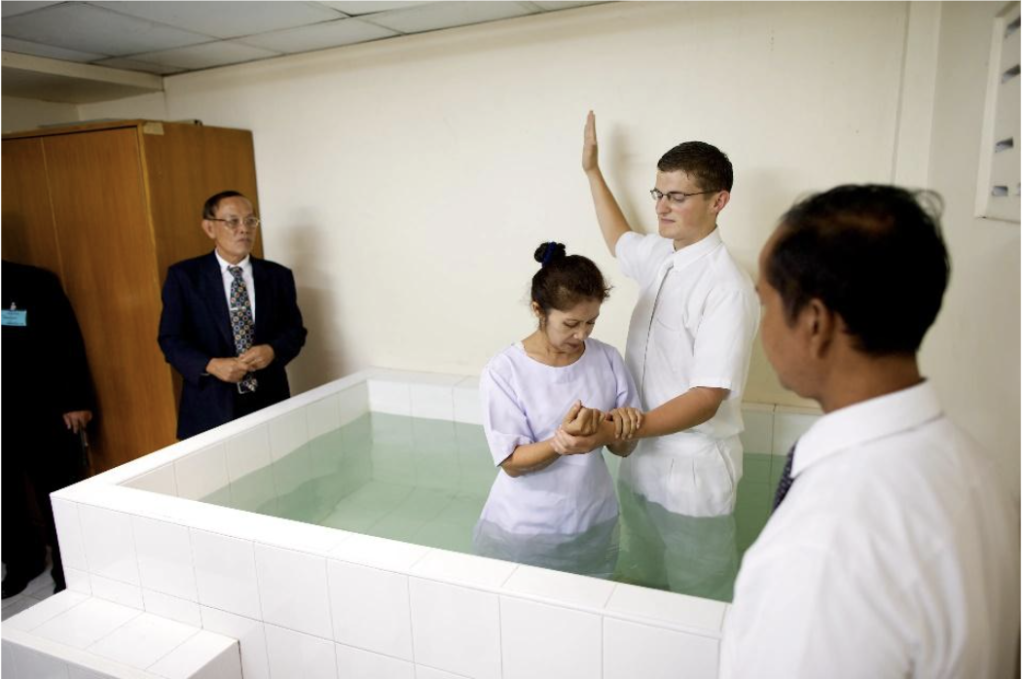
The need for each individual to be baptized as an act of repentance and the vehicle by which they access the spiritual blessings of the covenant is more explicitly addressed in the Book of Mormon than it is in the Bible. “The Torah never requires immersion as a component of repentance. Immersion in water accomplishes ritual purification, but the Torah does not prescribe it as a repentance-ritual. In rabbinic thought, however, ritual immersion can symbolize the spiritual washing obtained by true repentance” [d]. Joseph Smith taught “‘Baptism is a sign ordained of God, for the believer in Christ to take upon himself in order to enter into the kingdom of God,’ and again more explicitly, ‘Baptism is a sign to God, to angels, and to heaven that we do the will of God’” [b]. The Book of Mormon is replete with examples of baptism for repentance and individual commitments to keep the commandments. Salvation however does not come from the act of baptism alone but must be extended by God and ultimately repentance and baptism are only one step in the salvation process.
Patterns of Salvation
In his work “A Word of Warning and Instruction”, Parley P. Pratt examines the account of Pentecost in the book of Acts and identifies a 5-step process by which individuals receive salvation and adoption into the Kingdom of God [e]. Noel B. Reynolds, in a paper published in BYU Studies Quarterly, identifies a similar multi-step process that is repeated in numerous Book of Mormon accounts that he calls “the principal elements of the gospel message” [b]. This principle is also called the “doctrine of Christ” (2 Nephi 31) and is that salvation comes as a result of a series of actions taken on the part of both God the Father and the convert. It begins when “men and women encounter the gospel first as a commandment or invitation to repent and come unto Christ” and they respond with faith in the good news that is offered to them. This faith then results in a decision to repent, or turn away from, whatever is at odds with the commandments of Christ. Repentance is followed by the convert’s act of baptism, to which the Father responds with the remission of sin and giving the gift of the Holy Ghost. The convert is then to “endure to the end” in order to receive the fullness of the covenantal blessings. The archetype for this pattern is found in the narrative of the first Passover, which was a defining moment for the nation of Israel and forms the basis for their identity as a people group that has covenanted with God.
- Faith
- Repentance
- Baptism in water
- Baptism by fire and the Holy Ghost
- Enduring to the end
The Baptism of Israel
The first step in the pattern of salvation is that of faith. But faith does not spring forth in the heart of a person fully formed, doubt always precedes faith. Faith grows as we hear the words of God through the scriptures, through prophets, and even as we see Him at work in our lives. When faced with the undeniable reality of God’s calling for his life Moses’s first response was one of doubt. “Who am I, that I should go unto Pharaoh, and that I should bring forth the children of Israel out of Egypt (Exodus 3:11)?” Moses didn’t start out as the great prophet “in the similitude of the Only Begotten”, he grew into that identity with each action he took to follow the instruction of the Lord to bring the children of Israel out of Egypt. Often expressing his doubts and insecurities to God each step of the way. The children of Israel likewise often expressed their doubts even after an initial burst of faith. When Moses first appeared to them and showed them the signs of God they believed him and his message, initially. But when deliverance didn’t come quickly and hardships increased, the children of Israel expressed their doubts in the promises of God and in Moses. Yet each time there was an action that needed to be taken, in faith the people would place the blood over their lintels, eat the first Passover, and cross through the sea. Faith and doubt go hand in hand and there is no faith where there is not first doubt. What defines faith is the action that is taken in the face of doubts.
Faith is then followed by repentance; in Hebrew the word for repentance is teshuva, which means “returning” and in Jewish thought it is a returning to the reality of our divine nature as children of God created in his image [f]. It is a turning away from “Egypt” which is a symbol of the “evil powers of this world”. The children of Israel demonstrated their repentance and desire to live up to their identity and divine nature every time they turned away from their doubts, which they had with each new challenge or hardship, and chose faith in the words of God through Moses. In the end acting on that faith when they followed Moses out of Egypt, and with each new test at the Red Sea, the waters of Marah, the manna in the wilderness of Sin, and the rock in Horeb. The children of Israel were often called to repentance over their rebelliousness and lack of faith which often showed in their cries of “why didn’t you just leave us in Egypt”. In this world only Christ has lived a life of perfect faith and did not need to repent. Faith and repentance are therefore inseparable elements that exist as two sides of the same coin. Repentance is an act of faith in which the convert turns away from “Egypt” and returns to their divine nature as a child of God; faith is believing in what God has said about our identity and making choices about how we act accordingly.
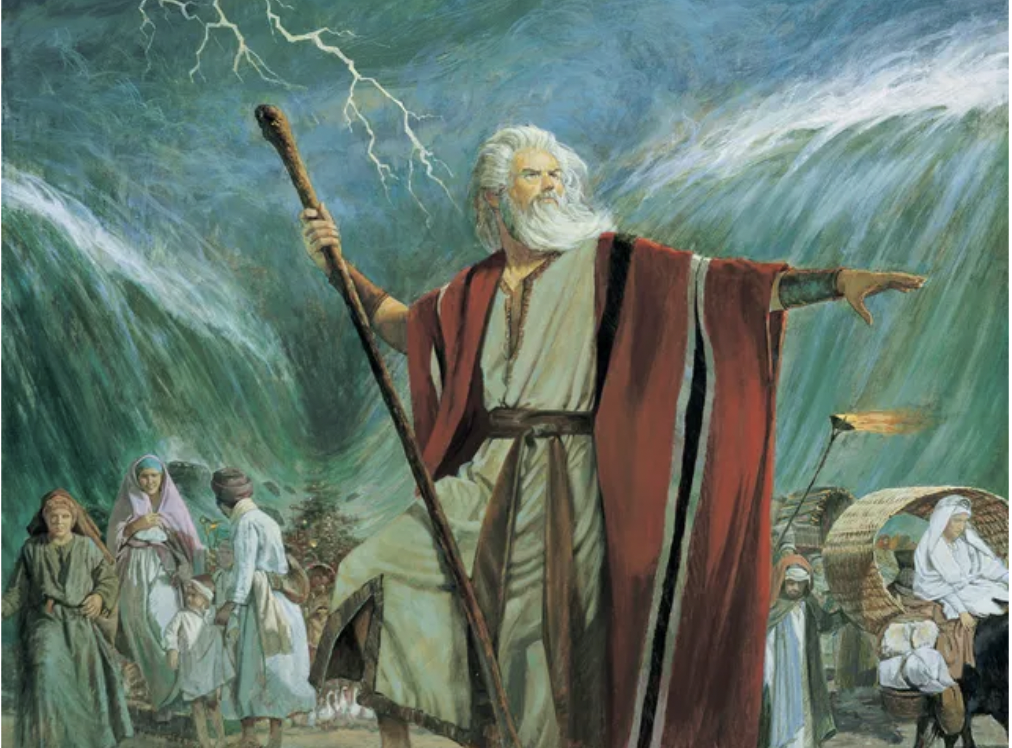
Once the children of Israel left Egypt they were faced with the impassible waters of the Red Sea. They had two choices – somehow pass through the sea, which would mean their death by drowning, or face death at the hands of the Egyptians. This is what baptism is – death to the identity that was forged in Egypt, and re-birth as a child of God. At the Red Sea the children of Israel were “baptized unto Moses” (1 Corinthians 10:2) who was their messiah and would bring them into covenant with God by what is known as the Mosaic Covenant. It is by faithfulness to the Mosaic Covenant that the children of Israel became the Nation of Israel and would experience either the blessings of the covenant or the consequences of breaking the covenant as an earthly nation. Today we are baptized unto Christ and his death into the everlasting covenant. “Therefore we are buried with him by baptism into death: that like as Christ was raised up from the dead by the glory of the Father, even so we also should walk in newness of life” (Romans 6:4). In baptism we leave behind our old natural man forged by our birth and experiences in this world and become “the children of Christ, his sons, and his daughters; for behold, this day he hath spiritually begotten you; for ye say that your hearts are changed through faith on his name; therefore, ye are born of him and have become his sons and his daughters” (Mosiah 5:7).
According to tradition, seven weeks after Passover, when all of Israel was “baptized”, the newly birthed nation finds itself at Mount Sinai. It is there that the people formally entered into their covenant with God; they heard thunder and a sound like a trumpet, they saw smoke and fire descending on the mountain. And they received the Torah which was the word of God. The Jewish sages teach that when the fire descended on the mountain it broke into individual flames that were heard as the voice of God speaking in every language on earth “so that all the nations should understand” what God was saying [g]. At Pentecost, the anniversary of Mount Sinai, the disciples were baptized with fire and the Holy Spirit. Individual flames appeared above their heads, and they spoke the words of God in every language. The Holy Ghost filled them, and they were “sanctified by the reception of the Holy Ghost” (3 Ne. 27:20). Through the power of the Spirit of God the Torah was written on their hearts, rather than on tablets of stone.
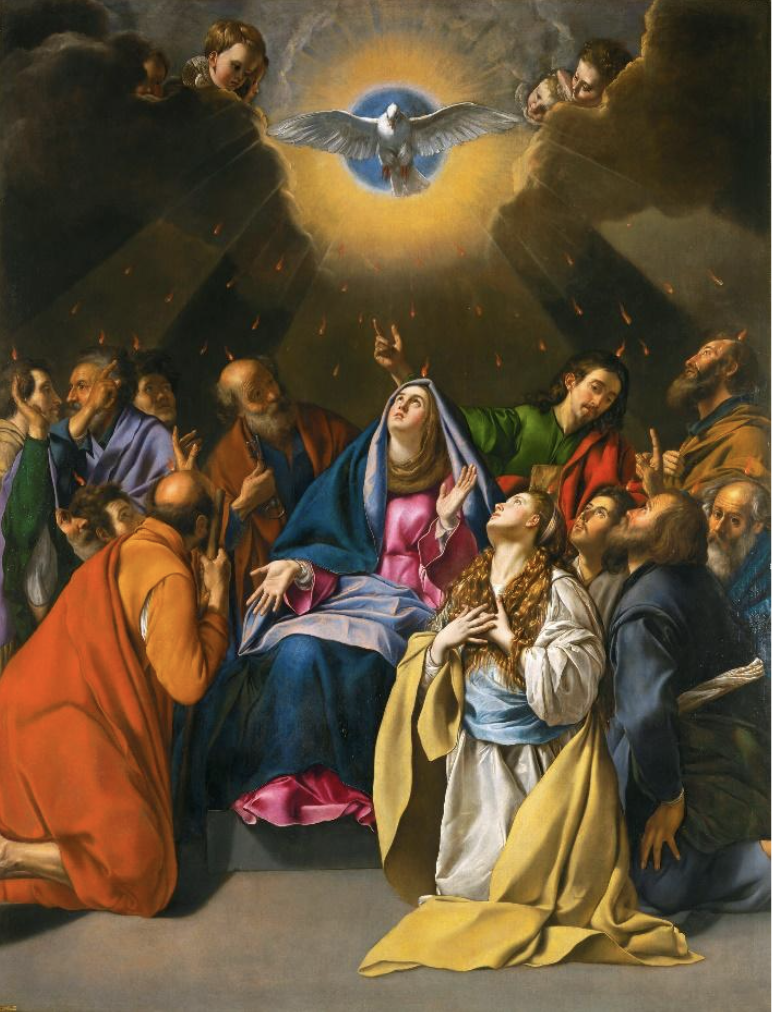
- The final action of the convert, after these things, is to come to the end of their life having kept the faith and their covenants. They have run the race, fought the good fight, endured to the end [h]. For Israel keeping covenant faithfulness toward God meant entering into the promised land and being able to remain there in safety and prosperity. In the land of Israel the people were in God’s country, it was the place his presence dwelt in the temple and represents that heavenly country of many mansions where we all hope to dwell in God’s presence. The “price” for entering this country was Israel’s repeated actions to have faith, repent, immerse themselves in water for purification in faithfulness to the covenants they made, and listen to the voice of the Lord that came through the prophet. This pattern was repeated year after year for an entire generation before the nation of Israel entered the promised land. We also are called to faith, repentance, baptism, and faithfulness to the voice of God in our generation before we will enter heaven at the end of our lives.
For those who have spent many years in the church all of this will be recognizable as the 4th Article of Faith. “We believe that the first principles and ordinances of the Gospel are: first, Faith in the Lord Jesus Christ; second, Repentance; third, Baptism by immersion for the remission of sins; fourth, Laying on of hands for the gift of the Holy Ghost.” However, for myself the discovery of this pattern of salvation in the narrative of the Exodus is surprising and compelling. I gained my testimony of the restoration primarily through study. Many years before I even heard about the restoration I had been learning how to read and understand the Bible through the lens of its Jewish origins. A significant element of this study was learning to understand what a covenant is and how it functions. I saw in the stories of the Old Testament the repeated action of God to form covenants with people and learning that this was God’s normal interaction with humanity was a revelation to me. I grew up with the doctrine of sola gratia “by grace alone” and in Protestantism this has come to mean that there is absolutely nothing that we need to do to receive salvation. There are no sacraments; no baptism for the remission of sins, no laying on of hands for the Holy Ghost. Like Nicodemus for whom salvation came by the grace of being born Jewish. For those who believe in sola gratia there is still often a transformation in the individual because the blood of Christ is effective; but there are no specific commitments made on the part of the convert to go, do, change, or otherwise behave in any way that would indicate that they have transferred their citizenship from the kingdom of the devil to the kingdom of God.
As a youth and young adult, I was constantly waiting for God to act on and in my life. I often felt alone and abandoned because I was always waiting for something to change my life for me. As a child this was acceptable and appropriate because children’s lives are directed by their parents. But maturing means learning to take on greater personal responsibility and changing the manner in which we interact with our parents. We learn that while their love will remain unconditional their blessing won’t. Receiving the blessings of maturity means struggling through school, finding a job, experiencing heartbreak and disappointment, having our beliefs about the world and our own identities challenged. Becoming an adult requires something of us that we cannot receive by grace alone. Christ grew in wisdom and grace – I understand this to mean that as we gain knowledge and experience our experience of God’s grace will also increase from the grace that is given to a small child to the grace that is given to the trusted heirs of the kingdom. For me the discovery that there is something I can do, that I must do, in response to the faith that I feel is, if I may use the word, empowering. This is the covenant we make in baptism; we covenant to grow and not remain children always, but to actively seek to become more like our Heavenly Father. Working out our own salvation in fear and trembling (Philippians 2:12).
References:
- a- Teachings of Presidents of the Church: Brigham Young [1997], 62–63
- b- Understanding Christian Baptism through the Book of Mormon Author(s): Noel B. Reynolds Source: BYU Studies Quarterly, Vol. 51, No. 2 (2012), pp. 3–37. Published by: BYU Studies
- c- https://ffoz.org/torahportions/commentary/how-can-a-person-be-born-again
- d- https://ffoz.org/torahportions/commentary/a-spiritual-immersion
- e- A Voice of Warning and Instruction, Parley P. Pratt, Chapter 3, 11th edition. Deseret Printers and Publishers, 1881.
- f- https://www.chabad.org/library/article_cdo/aid/5808387/jewish/Repentance-Teshuvah.htm
- g-https://ffoz.org/torahportions/commentary/the-signs-of-pentecost
- h- Hebrews 12:1, 2 Timothy 4:7, 2 Nephi 21:15

Prepare with Us
The Honey and Lilies Blog is dedicated to helping your prepare spiritually, mentally and emotionally, physically, and temporally.
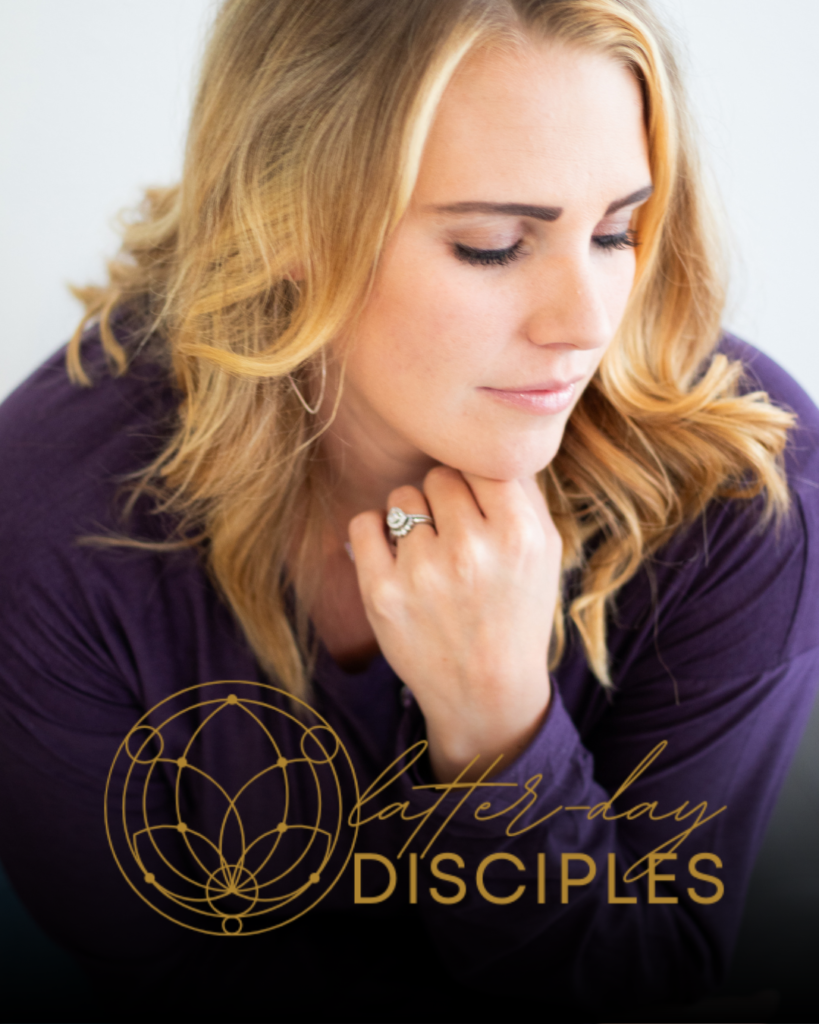
Tune In
Join Meghan each week for inspiring messages, and diving into the scriptures to help you live the gospel, seek truth, and become a true disciple of Christ.

Dive Deeper
We are excited to offer online, self-paced courses to help you deepen your faith and understanding of the gospel and your covenants.

